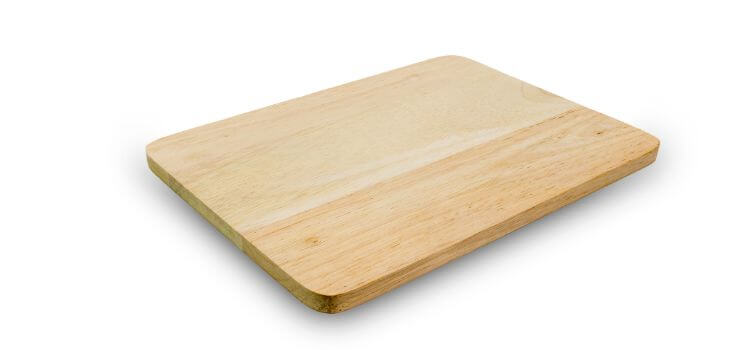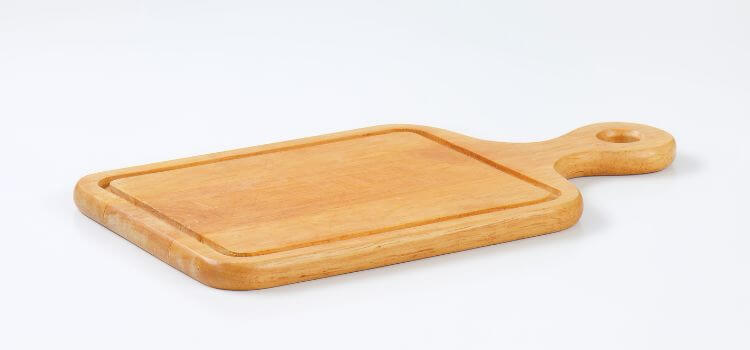As an Amazon Associate, I earn from qualifying purchases

In the heart of every kitchen, cutting boards stand as unsung heroes, playing a pivotal role in food preparation and kitchen safety. These sturdy surfaces not only protect your countertops but also serve as the foundation for culinary creativity. However, not all cutting boards are created equal, and selecting the right wood is crucial to ensure durability, hygiene, and performance.
Whether you’re slicing vegetables or carving meats, the wood of your cutting board can greatly affect your cooking experience. This article delves into the essential factors to consider when choosing the best wood for cutting boards, offering insights into popular wood types, their benefits, and how to maintain them for years of reliable use.
Factors to Consider
When selecting a wooden cutting board, various factors influence its functionality and longevity:
- Hardness: The hardness of wood determines how well it can endure the repeated blows of a kitchen knife. Harder woods resist cuts and gouges, maintaining a smooth surface longer. However, overly hard woods might dull knife blades faster, striking a balance is key.
- Grain: The grain of the wood affects both the board’s stability and its aesthetic appeal. Tight, closed grains are less prone to absorbing moisture and bacteria, making them more sanitary options. The choice between edge grain and end grain also impacts the board’s durability and appearance.
- Porosity: Porous woods tend to absorb more moisture, which can lead to warping and bacterial growth. Choosing a wood with low porosity helps maintain hygiene and structural integrity.
Popular Wood Types and Their Characteristics
Several types of wood are commonly used for cutting boards, each with unique attributes:
- Maple: Maple is a top choice for cutting boards due to its excellent hardness and fine, even grain. Its light color complements various kitchen styles, and its durability makes it a long-lasting option.
- Walnut: Known for its rich, dark hue, walnut offers a balance of hardness and knife-friendliness. Its aesthetic appeal makes it a popular choice for both functional and decorative purposes.
- Cherry: Cherry wood boasts a warm, reddish-brown color and a medium hardness. While it may scratch more easily than harder woods, its unique appearance and smooth surface are highly valued.
- Bamboo: Technically a grass, bamboo is celebrated for its sustainability and hardness. Bamboo cutting boards are eco-friendly and resistant to knife marks, but they can be tougher on blades.
Benefits and Drawbacks of Each Type
Each wood type has its pros and cons, making your choice a matter of personal preference and practical needs:
- Maple: Known for its durability and resistance to bacteria, maple is a heavy wood that can withstand rigorous use. However, its weight may be a drawback for some users.
- Walnut: Walnut’s beauty and moderate hardness make it a favored choice, though it requires periodic maintenance to preserve its condition.
- Cherry: While cherry cutting boards are visually appealing, they may not be as durable as harder woods, requiring more careful handling to avoid scratches.
- Bamboo: Bamboo’s sustainability is a major plus, but its hardness can be unforgiving to knife edges, necessitating frequent sharpening.
Tips for Maintaining Wooden Cutting Boards

Proper care extends the life of wooden cutting boards, ensuring they remain safe and effective:
- Cleaning: After each use, wash the board with warm, soapy water and dry it thoroughly to prevent moisture absorption. Avoid submerging it in water or placing it in the dishwasher.
- Oiling: Regularly oiling your board with mineral oil or a specialized wood conditioner helps maintain its moisture balance and prevents cracking.
- Avoiding Damage: To prevent warping and cracking, keep your board away from direct sunlight and extreme temperature changes. Use cutting board mats or pads to protect it from scratches when storing.
How to Choose the Right Wood for Your Needs
Selecting the perfect wood for your cutting board involves evaluating your specific needs and preferences:
- Cooking Habits: Consider how often you use your cutting board and the types of foods you prepare. Frequent cooks might prioritize durability, while occasional users might focus on aesthetics.
- Kitchen Aesthetics: Your cutting board should complement your kitchen’s style. Lighter woods like maple suit modern kitchens, while darker woods like walnut add warmth and elegance.
- Budget Constraints: Balance your budget with the desired quality of the cutting board. Investing in a high-quality board can offer long-term savings by avoiding frequent replacements.
Conclusion
In the quest for the perfect cutting board, choosing the right wood is a decision that blends practicality with personal taste. By understanding the characteristics of different woods and how they align with your cooking habits, you can select a cutting board that enhances your culinary journey. Whether you prefer the classic durability of maple, the rich allure of walnut, the warm tones of cherry, or the eco-friendly nature of bamboo, each wood offers unique benefits.
Remember, investing in a quality cutting board is an investment in your kitchen’s efficiency and safety. With the right care and consideration, your cutting board can serve as a reliable partner in crafting delicious meals and unforgettable memories. So, take the time to explore your options, weigh the pros and cons, and choose a wooden cutting board that will stand the test of time in your culinary adventures. Happy cooking!
FAQ
What type of wood makes the best cutting board?
Maple is often considered the best wood for cutting boards due to its hardness, fine grain, and resistance to wear and bacteria. Its durability makes it ideal for heavy use, and its light color complements most kitchen aesthetics, making it both functional and visually appealing.
What wood should not be used for cutting boards?
Softwoods like pine and cedar should be avoided for cutting boards as they are too porous and soft, leading to quick wear and increased risk of harboring bacteria. Their high resin content can also affect food flavor and make them less hygienic for kitchen use.
What is the most sanitary wood for cutting boards?
Maple is regarded as one of the most sanitary woods for cutting boards. Its tight grain structure minimizes moisture absorption and bacterial growth. Regular cleaning and maintenance, such as oiling, further enhance its hygienic properties, ensuring a safe surface for food preparation.
What material should a cutting board be made of?
Cutting boards should ideally be made of hardwoods like maple, walnut, or bamboo. These materials provide sufficient hardness to withstand cutting without excessive knife damage. They also offer a balance of durability and aesthetics, making them practical and attractive kitchen staples.
As an Amazon Associate, I earn from qualifying purchases